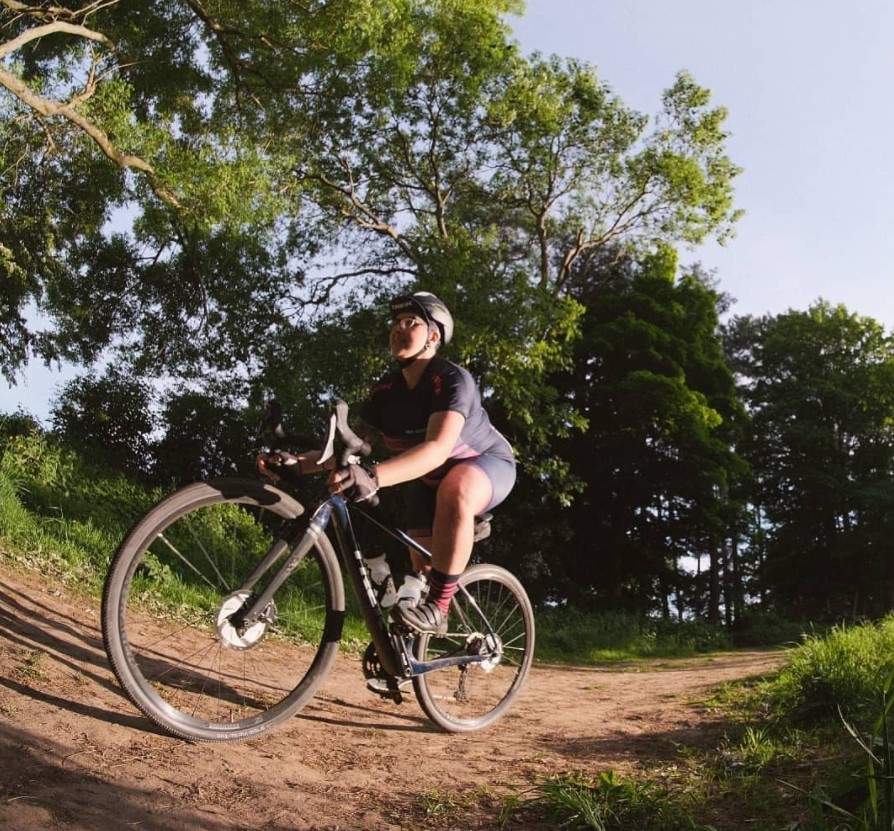Indoor cycling and pregnancy: Is it safe?
Key considerations if you’re expecting and want to continue cycling indoors
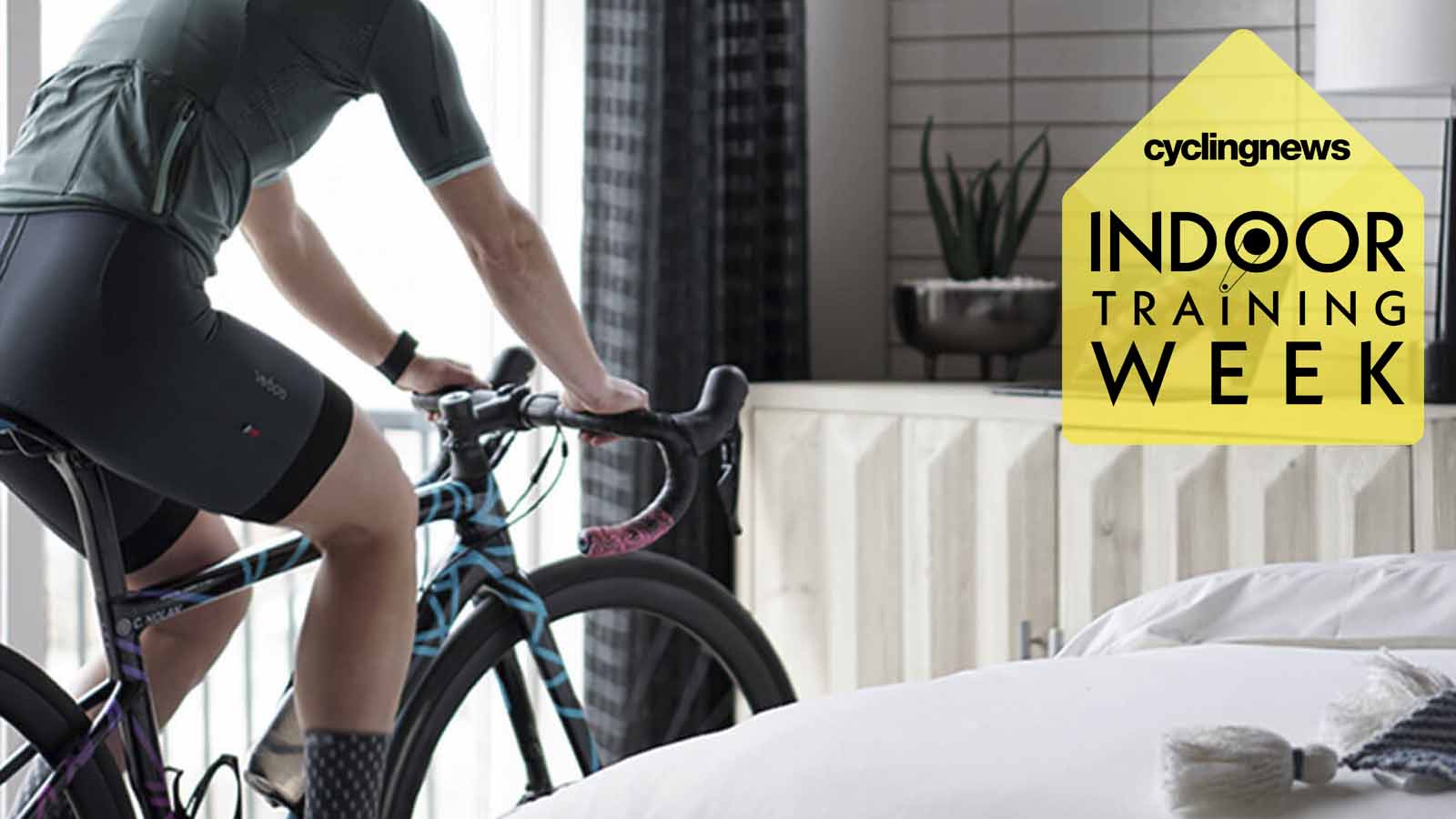
With the days getting shorter, darker and colder, lots of cyclists are migrating indoors. While for most people, the transition to indoor cycling is simply a matter of hitching up a bike to one of the best turbo trainers and getting started, what if you’re pregnant and unsure about the safety of doing so?
Pregnancy does a whole host of things to your body, but how much does it impact your ability to continue cycling, indoors and outdoors? To answer this question, we chatted to Amber Pierce, former pro cyclist and Product Manager at TrainerRoad, about how she continued to safely use her indoor cycling setup throughout her first pregnancy.
Having retired from professional cycling back in 2018, Pierce still represents and competes for Cannondale, and when she found out she was pregnant in December 2020, she was already in the midst of an indoor training regime.
"The big question was, is it going to be good for me as an individual?” she tells us. “At that point, I thought, 'I'll back up a second'. [Since retiring] I’ve really been on a programme of training when I want to, because it feels good, without it necessarily being goal-oriented."
Here are some key takeaways from our chat with Pierce, so you can safely continue your indoor cycling routine throughout your pregnancy, should you wish to.
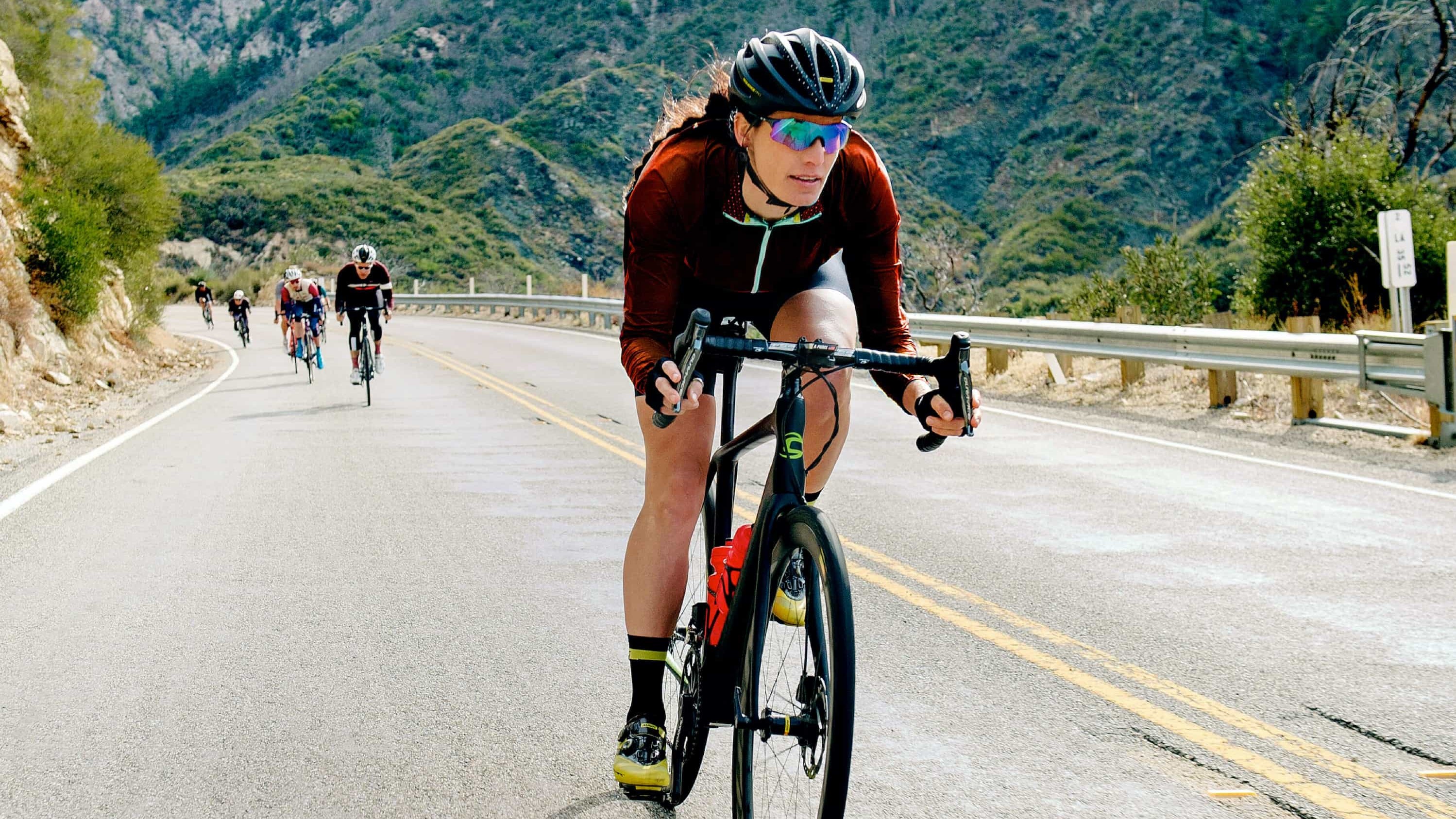
The proof is out there
“I don’t want to understate this because it’s such an incredible asset,” she begins. “I think to anyone who’s thinking about getting pregnant, or is pregnant and wondering what to do as far as training, there are so many role models. People who I knew personally, who were high-level athletes who got pregnant, delivered healthy babies and trained all the way through their pregnancy, some of them competing.”
This is true, there’s no shortage of inspiring athletes who have continued to train and thrive in their careers while juggling pregnancy and birth. The likes of Lizzie Deignan, Dame Sarah Storey, Laura Kenny and more recently, Elinor Barker — who competed and won a silver medal at the 2020 Olympics while pregnant — should all be enough to set your mind at ease that cycling, and even competing at a high level, can be safe during pregnancy. The key is doing your research and listening to what your body tells you.
Get The Leadout Newsletter
The latest race content, interviews, features, reviews and expert buying guides, direct to your inbox!
But how much is enough? According to Pierce, there are two ends of the spectrum: “I know women who rode all the way up until the day that they delivered, which is incredible, and I think that absolutely needs to be on the table as an option. And then on the other side of that is letting it go and being okay with setting down that part of your identity for a while, knowing that you can pick it back up again. I landed somewhere in the middle, but I think the really key point is to be really honest with yourself about where you are. A really common piece of advice that pregnant people get is to just do what you normally do. You don't want to suddenly go from couch potato to trying to make the Olympic team.”
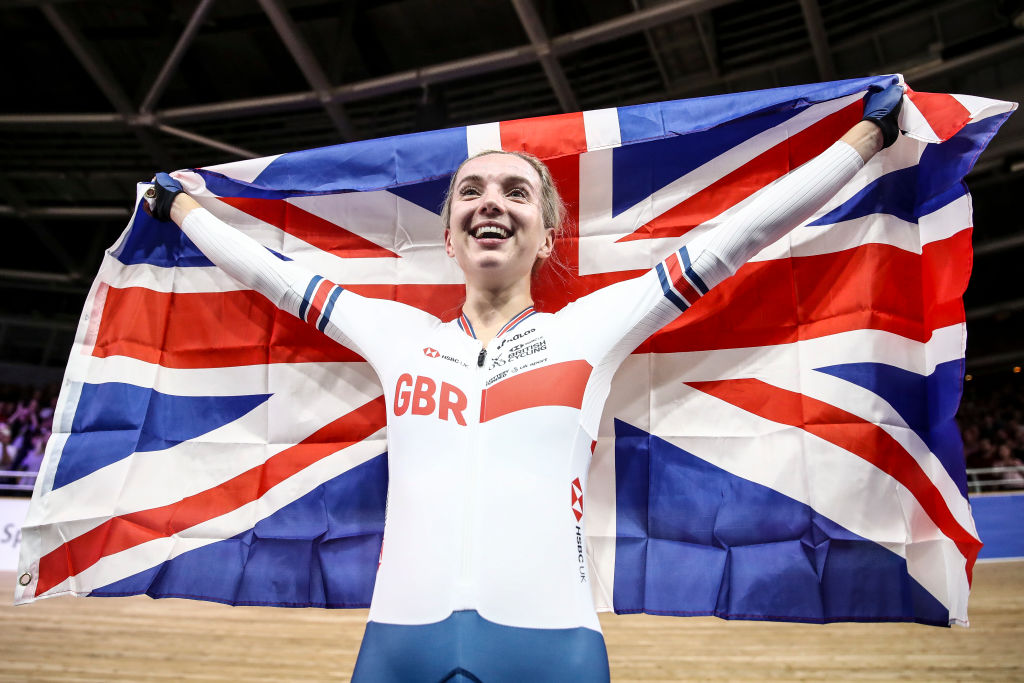
Do your research
While our health professionals are exactly that — professionals — it’s important to remember that the people you talk to may not have personal experience or expertise on your level of training, or what your body is capable of. When reflecting on her appointment with her OB-GYN (obstetrician-gynaecologist) nurse, Pierc tells us:
“I remember one of the things that she said that really threw up a red flag for me was, ‘you can exercise if you want, but don't let your heart rate go over 140’, which, as athletes, we know everybody's heart rates are so different, so 140 is such an arbitrary number. Based on my background, I knew immediately that that was preposterous.
“There's a really great resource for anybody who's pregnant or thinking about getting pregnant, called evidence based birth, run by a woman in the medical profession who long ago recognised that there's a huge gap between medical practice and best evidence. What happens is, there’s research that establishes new best evidence, but it takes 15-20 years for that new research and evidence to be incorporated into traditional medical protocol. Now, some of these things we've established long ago, and they're totally spot on so tradition is nailing it. But there are some things where we've learned a lot, our knowledge and understanding has evolved, yet traditional medical practice has not. The 140 heart rate is one of those things; it's a little bit archaic, and it's just something a lot of people learn in their training by rote, that's just what they tell their patients. If I hadn't known my body better and questioned it, for me, that would be a pretty low level of intensity. I wouldn’t be able to go uphill anywhere.
“Another really great book is called ‘Expecting Better’ by Emily Oster, whose background is actually in economics, but she does an incredible job of explaining how to read and understand research so that you can kind of evaluate statistics and some of this evidence for yourself. She points out that a lot of the new evidence doesn't line up with what you're told in the medical office. So our understanding in general at a population level is evolving, and a lot of what you might hear from a nurse who's been traditionally trained, may or may not reflect our most recent understanding of the science. Then the other thing to remember is everyone is different.”
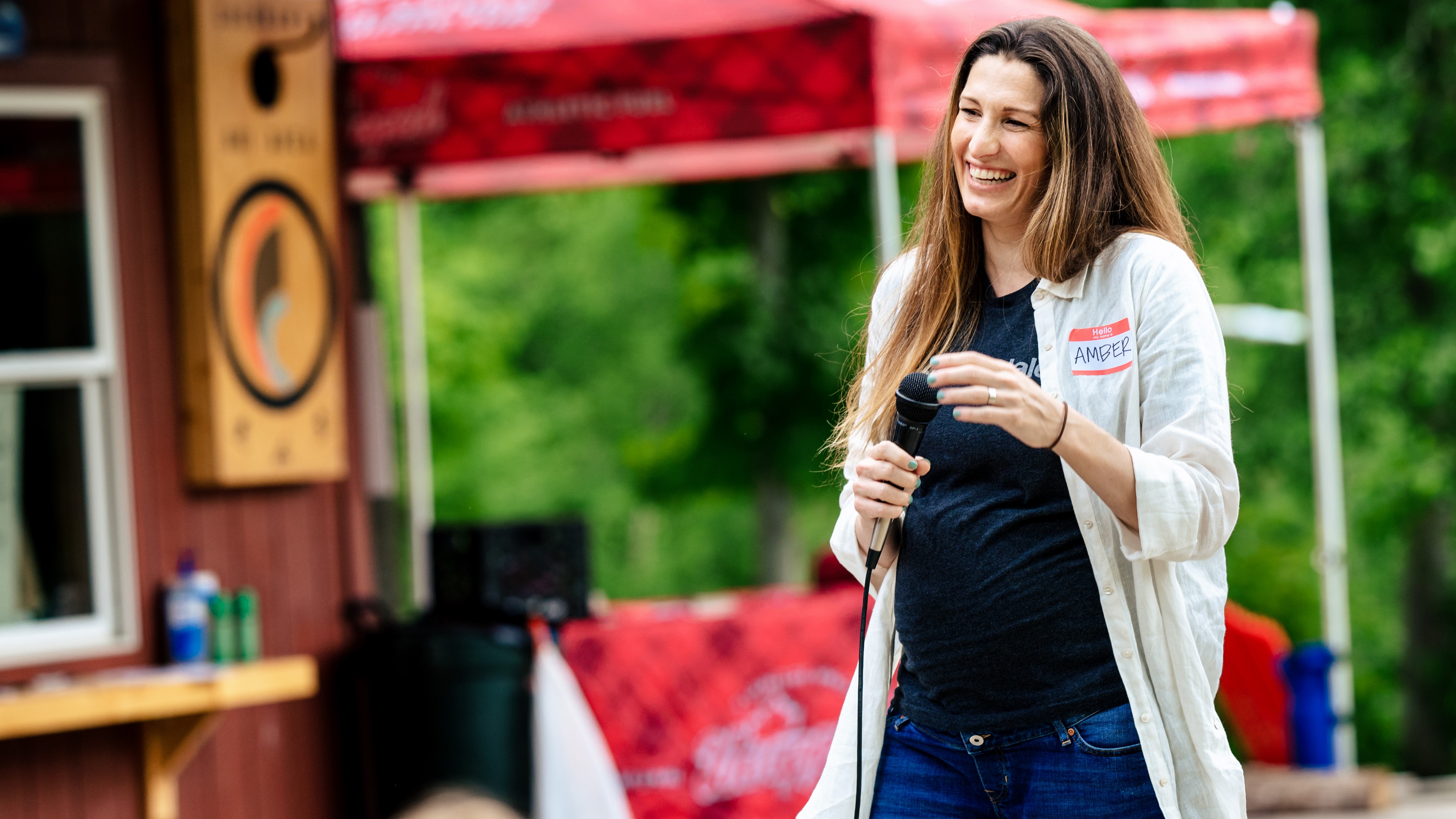
There’s a wide range of ‘normal’
“I worked with a midwife, and she very wisely told me from the beginning, there's a very, very wide range of ‘normal’. When it comes to pregnancy, even one individual having multiple pregnancies, their pregnancies are going to be wildly different, as is their experience in childbirth.
“You need to see what's going to be best for you as an individual. Going back to having these wonderful role models, I understood that for some individuals, it was absolutely possible to train at a very high level throughout a pregnancy and be healthy and deliver healthy baby. Of course, just because you can, doesn't mean that you should, and we go back to what's going to be best for you as an individual.
“I trained and competed at a very high level for a very, very long time, and I have really put my body through the wringer in a big way. I broke my pelvis twice, once in 2011, and once in 2015, and I remember at that time wondering if it would be a problem if I ever decided I wanted to have kids. Thankfully, it did not. But for me as an individual, over the last couple of years since retiring, I have really felt like what my body needs is a break.”
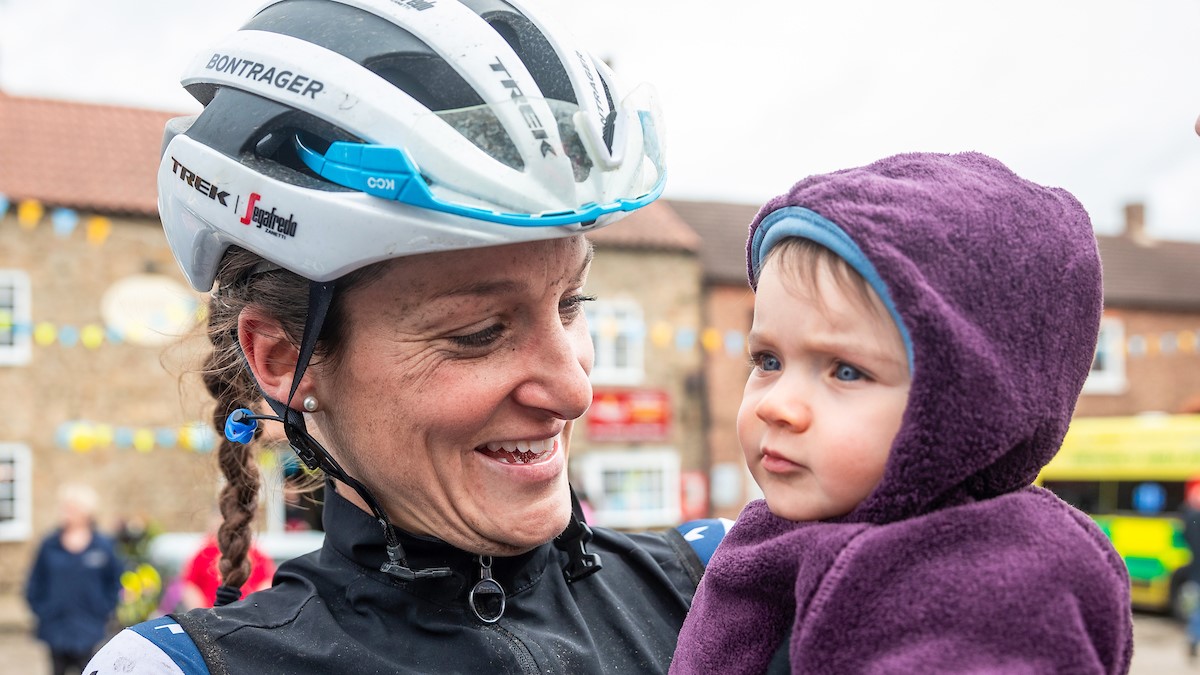
Listen to your body
So how did Pierce make the decision to continue with indoor cycling after discovering her pregnancy? As she tells us, she listened to her body and did what made her feel good.
“I was in this headspace of wanting to ride my bike to feel good. This was a departure from the mentality I had when I was racing, which was very much about having to train no matter what. So I was already in this transition of wanting to listen to my body, and not getting on the trainer because I felt like I had to, or would feel guilty if I didn't. I wanted to get on a trainer because it was going to feel good.
“As an athlete, I spent years overriding a lot of messages I was getting for my body to slow down, saying ‘this is too much’. But when you're competing at that level, you have to do that. It's not necessarily going to be healthy, and you're walking a fine line for a really long time. And so, for my personal situation, when I got pregnant, I was immediately quite exhausted. The first trimester, your fatigue goes through the roof, and I definitely had morning sickness. So it really wasn't conducive to wanting to get on the bike.
“I had signed up for the do better together ride, which Ayesha McGowan puts together every winter and is really fun, because it's a community of people that get together and do indoor riding together. I wanted to do that, and I was feeling pretty nauseated. I got on the bike and I just said, ‘you set any goal for yourself, it doesn't have to be some smashing, epic thing’. So I decided to just ride one hour a day and see if I could do that, and it actually really, really helped with my nausea. I didn't pick VO2 max efforts, I think I did some tempo and some sweet spot sessions, and that felt really, really good.
“So for the rest of my pregnancy, I really let my body be my guide, and that meant for me, not a ton of riding. I think it's important to emphasise that, because there is such a wide range of ‘normal’.
“For me, this period of my life has been very much about healing from what I went through as an athlete, and so I really wanted to tune in and honour what my body was telling me through the pregnancy, really acknowledging the deep fatigue I was feeling, and letting go of feeling like I had to be goal-oriented.”
“I really just wanted to say ‘Okay body, you tell me. Because I don't know how to make a human being from scratch, but amazingly, you do'. I think it was a really healthy approach because on the one hand, I knew if I wanted to, I could do a ton of riding and it would be safe. I was perfectly healthy in terms of the pregnancy, there wasn't any kind of a complication that would put my health or the baby's health at risk if I were to do some riding, and I did even do some running outside when the weather was good. I felt a lot more comfortable riding inside though, because it felt quite a bit safer in terms of traffic.
“I could be very much in control of my intensity, what workout I was doing, and I could stop a workout and just pedal if I needed to. So it wasn't like I got out somewhere and was like, ‘Oh, no, now I have to climb over this giant mountain to get home’.”
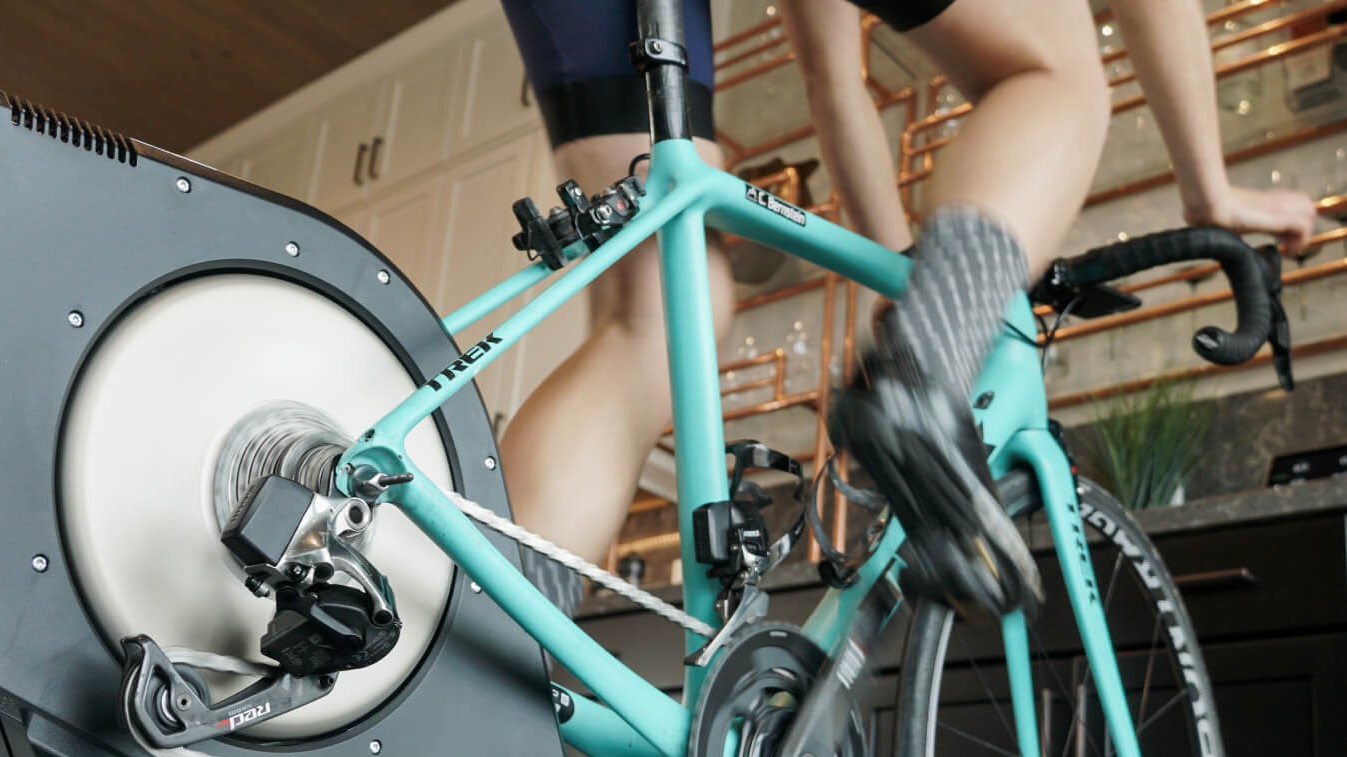
Look after your mental health
An interesting takeaway from our chat was about how we have to compromise aspects of our identity when we make a change to our training regime, and the impact this can have on mental health and wellbeing.
“I think a really important thing I'd like people to understand is that you can really do whatever you want, within the guidelines of what your doctor recommends to you, and you need to have those conversations with your doctor. Do what's gonna be best for you as an individual. For some people, it's really hard, emotionally, to let go of that identity as an athlete, or cyclist, or person who rides a lot.
That's a huge part of your mental health, and your mental health is very much a part of your entire health and your wellbeing, which is definitely going to affect your pregnancy. So if the thought of losing that identity even temporarily is that stressful, then it's probably better for you to ride and to express that identity, the way that you feel that you need to.”
This leads Pierce to reflect on ways in which her career as a pro cyclist has taught her to deal with this temporary loss of identity — namely, recovering from injury.
“I think the hardest part about recovering from an injury is that loss of identity, even though it's temporary, it feels like it's forever. I feel like I've been through that enough times that it really helped me in the beginning of the pregnancy, because I felt really comfortable setting down that identity, knowing I could pick it up again later, because it's happened so many times before. I think if you haven't had that experience where you've gone through it and come out the other side, it can be really daunting. So if riding feels good and empowering and energising, then that's absolutely what you should do. For some people, that's going to be riding a ton. For me, riding a ton was the norm for a long time, but I think it's also important to be okay with backing off and doing less.
“That’s a little bit harder now because it's not very Instagram-worthy. I'm not posting big epic Strava rides, or photos of me on my bike with my pregnant belly, and things like that. I love it when women do that because I think it's so important that we demonstrate that it's a possibility and an option, but an equally accessible option is doing less, and that's okay too. Meeting yourself where you are is so, so, so important.”
“That’s why it's so important to have those role models at both ends of the spectrum, because I think for so many reasons, we get external pressures to look a certain way and to have certain metrics, right? You post your Strava ride, and people want to know your mileage, elevation, average speed, and all the other things that mean we can compare ourselves with other people. This is where we can either judge ourselves or invite judgement, and pregnancy is such a personal, deeply individual path that it's so important to just throw judgement out the window, really get in tune with yourself, and be okay with wherever you land with that, because this is your path, and your normal is never going to be the same as somebody else's normal.”
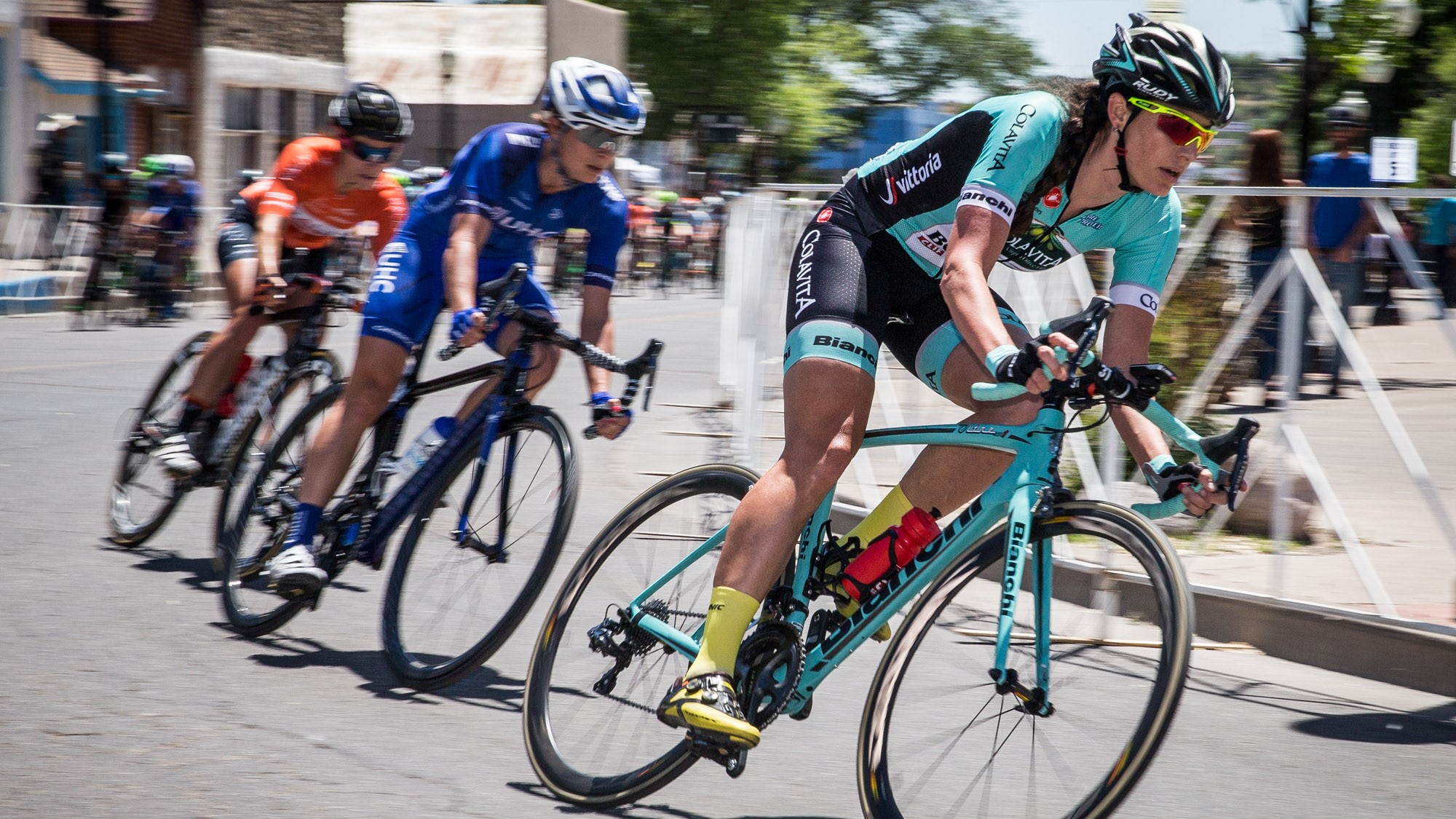
Make adjustments
As Pierce’s pregnancy progressed and her body changed, she found she needed to make slight adjustments to her indoor cycling setup to accommodate those changes. She talked us through her at-home setup and how she adapted it in the later stages of her pregnancy.
“I have my Cannondale SystemSix set up on the Saris H3 Smart Trainer and TD1 Trainer Desk, and I have a Lasko industrial fan. I work with TrainerRoad, so I would load one of those workouts, and with my laptop and fan, I would just go. From early on it was fairly easy to just ride my bike in my normal, very aggressive setup, but then toward the end of the second trimester, I couldn’t do the whole workout like that anymore.
I needed to lift my front end at least six centimetres because although my belly wasn't quite hitting the top tube, it was hanging so low that it would brush against my legs when I came up over the top of the pedal stroke. So I really just needed more clearance and to open that hip angle. The solution I found was to put a foam roller across my bars, and that gave me an instant lift. Also, it was really nice and cushy to lean on, I could drape a towel across it, and it was actually perfect. That was exactly what I needed.”
In terms of the actual workouts she did while pregnant, Pierce told us how TrainerRoad worked well for her.
“My team was helping to develop the Adaptive Training features at TrainerRoad, so I had been using that prior to, and early on in the pregnancy, before we had launched it publicly. They use progression levels, which allow you to choose a particular training zone capacity, like threshold versus sweet spot versus tempo. I knew what my FTP was, and actually managed to drop that down a little bit, because I wanted to err on the side of caution, being a little bit nervous.
“One of the things I always say is, anytime you're training, any ride you do is always money in the bank. So I did not need this to be super precise, I did not need to be really hitting the top end. So I dropped my FTP manually a little bit, and then I would train within those progression levels based on where you have developed your capacity within that power zone. Adaptive Training will recommend workouts based on whether they are an achievable workout, a productive workout, a stretch, or a breakthrough, given where your fitness is at that moment. So I was using progression levels to identify workouts that I felt were either achievable or productive and didn't go into the stretch or breakthrough workouts. I don't think that those would necessarily be detrimental, but I just wanted to feel good.
“From a cardiovascular perspective, I didn't need to be building fitness per se, I just wanted to be getting those systems online, flushing things out, moving and feeling good. So I was doing mostly tempo and sweet spot training. I would ride anywhere between 45 minutes and 90 minutes, which was what felt good, and I was much better able to focus and sleep afterwards. And it didn’t feel like it was particularly taxing, so that was kind of the level that really worked for me.
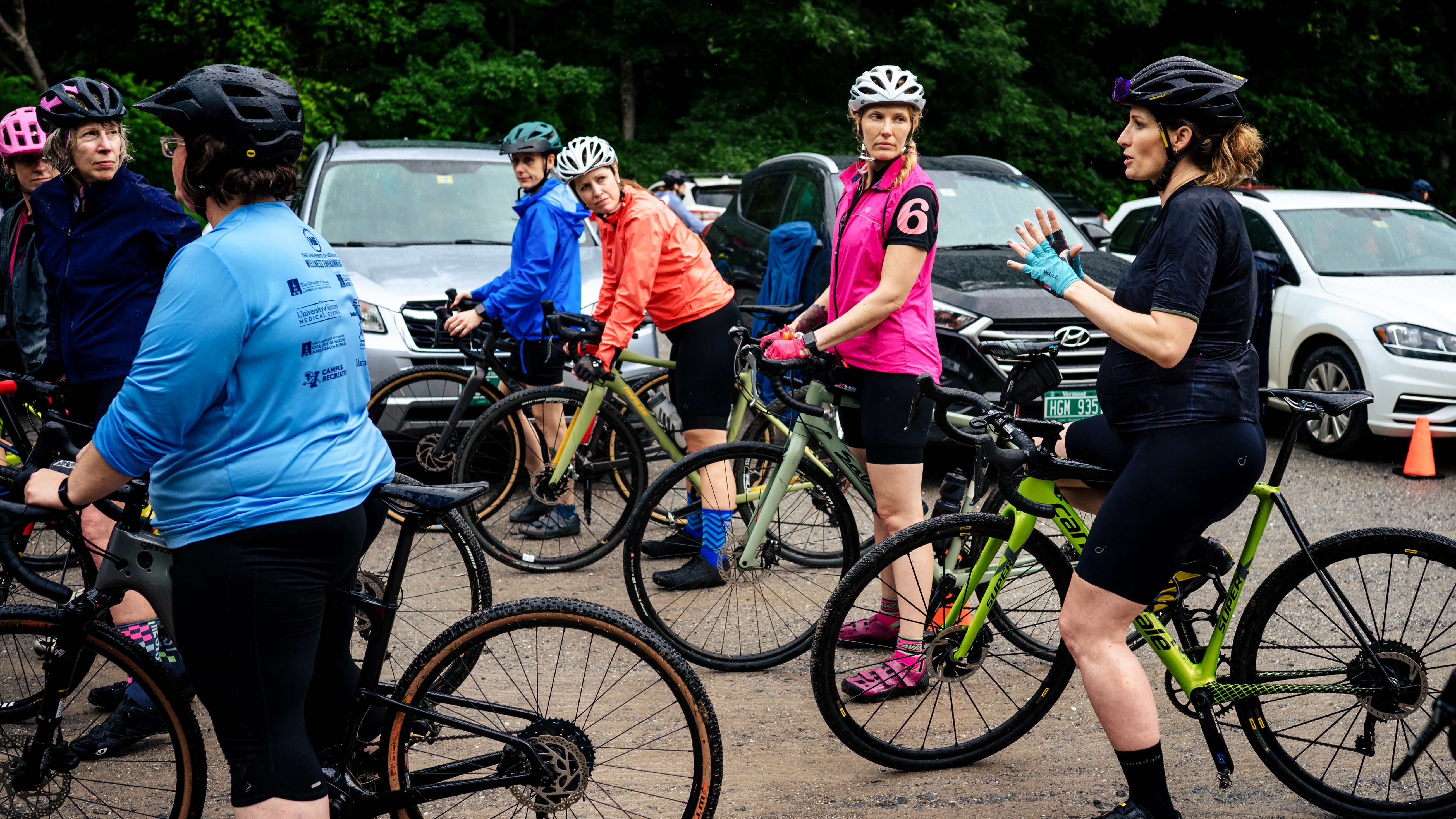
Embrace the crossover
"There's a surprising amount of crossover, especially when it comes to the mental strength that we cultivate from riding a lot, and something like childbirth. With a bike race for example, you want to have a strategy going in. You want to think about what the course looks like, and who's going to be competing. Based on all that information, you can come up with what you think is going to be a good strategy on the day, and it's very comforting to go into, to get shoved to the start line with a strategy in mind. But at the same time, you know that you can't control what other people are going to do, or what's going to happen with the weather. And so as much as it's comforting to go to the start line with a strategy, you also know that there's a very strong possibility that you're going to have to throw that out the window very quickly.
"The same thing can happen with childbirth. It’s important to do your homework and feel like you have a good plan in mind, but also to be mentally prepared to throw the plan out the window, because there are a lot of things that are not within your control. And I think that was a huge thing that was really helpful for me in childbirth. I don't need to go into all the details, but I will say that I had a plan that I really liked, and I was hoping to be able to execute, and then things happen that you literally have no control over. There's nothing I could have done during the pregnancy to prepare, and you just have to say, ‘okay, I've been here before, I've had this happen where I had a strategy and I had to throw it out the window and roll with the punches and adapt, and I think that that's such important mental skill.”
Mildred joined as Reviews Writer for Cyclingnews and BikePerfect in December 2020. She loves all forms of cycling from long-distance audax to daily errand-running by bike, and does almost everything on two wheels, including moving house, and started out her cycling career working in a bike shop. For the past five years she's volunteered at The Bristol Bike Project as a mechanic and session coordinator, and now sits on its board of directors.
Since then she's gone on to write for a multitude of cycling publications, including Bikeradar, Cycling Plus, Singletrack, Red Bull, Cycling UK and Total Women's Cycling. She's dedicated to providing more coverage of women's specific cycling tech, elevating under-represented voices in the sport, and making cycling more accessible overall.
Height: 156cm (5'2")
Weight: 75kg
Rides: Stayer Groadinger UG, Triban RC520 Women's Disc, Genesis Flyer, Marin Larkspur, Cotic BFe 26, Clandestine custom bike
